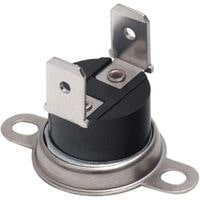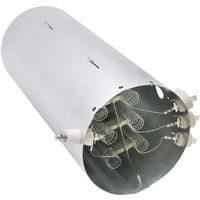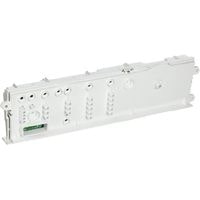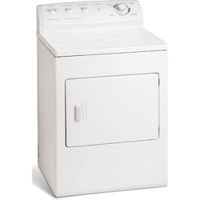Frigidaire dryer not heating. During the time we tested a Frigidaire dryer, it was discovered that one of the functions of this device would not work.
This included the heating part. The reason for this happening is because a broken element inside had stopped working as well as faulty sensors.
In this article, we’re going to share information about these malfunctions in hopes that it will help you understand how they get fixed.
Frigidaire dryer not heating

When not heating at all, the dryer may have a defective thermal fuse. Follow these directions to check for continuity of the thermal fuse.
Remove the back panel and then locate the fuse on the rear right side of the unit (when facing from the back) attached to housing near the bottom. Use a multimeter to test for continuity between tabs 1 and 2.
Blown Thermal Fuse
When dryer malfunctions it can be dangerous, especially if there is still heat inside. A thermal fuse helps to

protect the dryer from overheating by cutting off the flow of power to the unit when it senses that there is an issue.
When the dryer overheats, which is a possibility due to many potential issues like improper venting,
for example, the fuse heats up and may eventually cause itself to fail, shutting off power completely without fail.
If this were to occur, one should use a multimeter to test the thermal fuse’s condition before using it as they are not reusable.
Despite being known as fuses, they shouldn’t explode or shatter in any way upon failure.
Rest assured that blown thermal fuses are only an indication of a restricted exhaust vent from the dryer to the outside so if you have tested and failed an existing thermal fuse in your device then fix those exhaust vents immediately before you attempt to test or replace another potential fuse element.
Igniter has Burned out
The igniter in a gas dryer or range starter is what uses electromagnetism to ignite the gas flowing into the burner. This is essential for starting up your kitchen appliance.
If this piece of equipment is faulty, you may experience problems with your range or dryer that include it not heating up at all.
To determine if this part has gone out for good, take a multimeter and place its leads onto the two terminals where the igniter cables connect.
If the result reads an open circuit, this means it has been fried and needs to be replaced.
Defective Gas Valve Solenoid
Gas dryers most often have two or more gas valve solenoids. The gas valve solenoids open the appropriate ports to allow gas to flow into the burner assembly.
If a gas valve solenoid fails, the dryer won’t heat, and you might want to take a look at the igniter – if it glows and goes out but does not light the gas, malfunctions have been detected.
If one or more of these coils are defective, we recommend swapping them for new Valve-Solenoid coils to make sure things continue to work properly.
Faulty Heating Element Assembly

The heating unit is the part of the dryer that generates heat.
If you notice that your dryer is not heating and drying your clothes as well as it used to, check to see if the heating unit has malfunctioned.
To find whether or not the heating unit needs to be repaired or replaced, measure it with a multimeter for continuity.
If there’s no continuity in the heating unit then it must be replaced so that you don’t risk ruining other more expensive parts of your dryer like its motor or control board.
The flame sensor isn’t working
The flame sensor detects the heat emitted by the flame. If this is defective, the dryer won’t heat.
It may first help to remove the igniter and thermal fuse as it may be a cause for the problem.
To recognize if there’s a problem with the flame sensor, use a multimeter to test its continuity at room temperature. Should this not work or show any faults, then it’s time to replace the sensor altogether.
The Thermostat does not have continuity
The high-limit thermostat is a safety feature that monitors the dryer’s temperature. If the dry heat exceeds an acceptable limit, the high-limit thermostat should shut off the gas supply to prevent damage to the unit.
A faulty high-limit thermostat will typically not shut off the gas supply if there is no overheating problem. However, this rarely occurs.
Check all common parts before you go replacing your thermostat to make sure they are functioning properly like flame sensors and temperature switches.
If you have determined that all of these parts are operating at maximum potential, test your thermostat with a multimeter for continuity. If it lacks continuity, replace it immediately to avoid damage or injury.
Replace the Timer
If the dryer doesn’t heat, the timer might be defective. However, this is very rarely the case. Before replacing the timer, check all the other components that are more often than not defective.
If you determine that all of these components are working properly, test the timer by using a multimeter and consulting the body/wiring diagram to see if it’s broken. If it’s bad and in need of being replaced, go ahead and do so.
Problem with Main Control Board

The main control board for your dryer is the most commonly defective part; however, it’s not always the case.
Before you order a new board, check out some of the more common parts that may have failed.
For instance, check all of the fuses on the board first by doing a continuity test with a multimeter.
If all of these look good, replace the entire control module.
You should be careful when touching any parts inside of your appliance as they may carry an electrical charge.
Frigidaire dryer not heating
Related Guides
